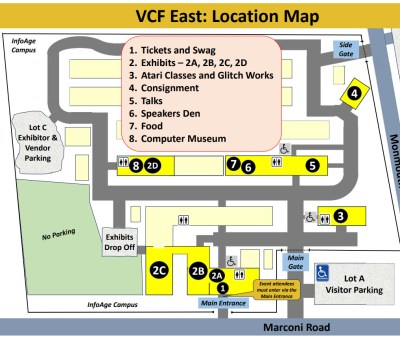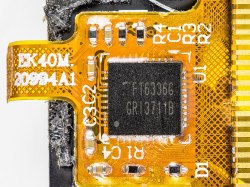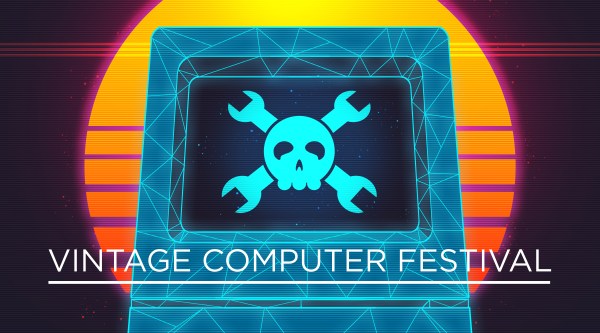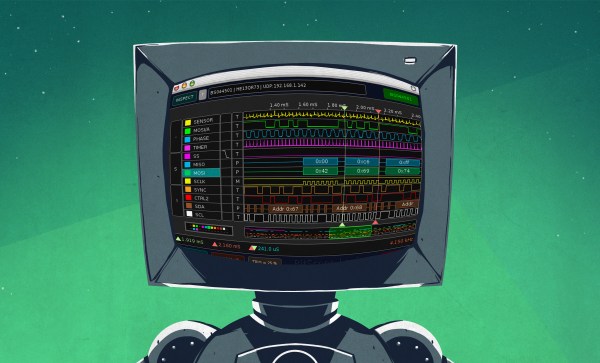Do humanoid robots dream of electric retirement? Who knows, but maybe we can ask Boston Dynamics’ Atlas HD, which was officially retired this week. The humanoid robot, notable for its warehouse Parkour and sweet dance moves, never went into production, at least not as far as we know. Atlas always seemed like it was intended to be an R&D platform, to see what was possible for a humanoid robot, and in that way it had a heck of a career. But it’s probably a good thing that fleets of Atlas robots aren’t wandering around shop floors or serving drinks, especially given the number of hydraulic blowouts the robot suffered. That also seems to be one of the lessons Boston Dynamics learned, since Atlas’ younger, nimbler replacement is said to be all-electric. From the thumbnail, the new kid already seems pretty scarred and battered, so here’s hoping we get to see some all-electric robot fails soon.
From Z80 To EZ80: Porting 8-bit Sonic 2 To The TI-84+ CE
An unwritten rule is that if two systems runs even roughly the same CPU, you are obligated to port software between them, or at least give it a fair shake. This led [grubbycoder] down the path of porting Sonic 2 for the Sega Master System (to the eZ80-based Ti 84+ CE. Selecting this particular graphing calculator came down to the raw specs matching up the best, as although the eZ80 in the Ti 84+ runs at 48 MHz, it’s got wait states that cripple its actual performance. Since the calculator also lacks the Video Display Processor (VDP) and a few other bits of hardware, those extra cycles are crucial to compensate.
![Sonic 2 on the Ti 84+ CE, courtesy of [grubbycoder]](https://hackaday.com/wp-content/uploads/2024/04/sonic_2_on_ti_84_ce.gif?w=320)
With those ducks aligned, the next task was to address the hardware differences. The calculator has no sound, so those routines had to go, and the color palettes of the Master System had to be mapped to that of the calculator. Since it’s a calculator, there were plenty of buttons for input, but ROM banking – which isn’t a thing on the Ti calculator – and the background and sprite rendering posed some issues. With that sorted, anyone with this calculator can now rejoice at having something better to play on their calculators than Snake in between heavy linear algebra sessions.
Hackaday Podcast Episode 267: Metal Casting, Plasma Cutting, And A Spicy 555
What were some of the best posts on Hackaday last week? Elliot Williams and Al Williams decided there were too many to choose from, but they did take a sampling of the ones that caught their attention. This week’s picks were an eclectic mix of everything from metal casting and plasma cutters to radio astronomy and space telescope budgets. In between? Some basic circuit design, 3D printing, games, dogs, and software tools. Sound confusing? It won’t be, after you listen to this week’s podcast.
Check out the links below if you want to follow along, and as always, tell us what you think about this episode in the comments!
Download an audiophile-quality oxygen-free MP3 file here.
Continue reading “Hackaday Podcast Episode 267: Metal Casting, Plasma Cutting, And A Spicy 555”
VCF East 2024 Was Bigger And Better Than Ever
I knew something had changed before I even paid for my ticket to this year’s Vintage Computer Festival East at the InfoAge Science and History Museum in Wall, New Jersey.
Over the last couple of years, attendance has been growing to the point that parking in the lot directly next to the main entrance has been reserved for only the earliest of risers. That hasn’t described yours truly since the days when I still had what my wife refers to as a “real job”, so that’s meant parking in the overflow lot down the road and walking the half a mile or so back to the main gate. Penance for working on the Internet, let’s call it.
 But this time, while walking along the fence that surrounds the sprawling InfoAge campus, I came across an open gate and a volunteer selling tickets. When commenting to her that this was a pleasant surprise compared to the march I’d anticipated, she responded that there had been so many people trying to get into the main entrance that morning that they decided to station her out here to handle the overflow.
But this time, while walking along the fence that surrounds the sprawling InfoAge campus, I came across an open gate and a volunteer selling tickets. When commenting to her that this was a pleasant surprise compared to the march I’d anticipated, she responded that there had been so many people trying to get into the main entrance that morning that they decided to station her out here to handle the overflow.
I was a few steps past her table and into InfoAge before the implications of this interaction really hit me. Two entrances. How many attendees does there need to be before you setup a secondary ticket booth out by the reserve parking lot just to keep things moving smoothly? Well, I can’t tell you what the exact number is. But after spending the rest of the day walking between all the buildings it took to contain all of the exhibits, talks, and activities this year, I can tell you it’s however many people came to VCF East 2024.
Compared to its relatively humble beginnings, it’s incredible to see what this event has grown into. InfoAge was packed to the rafters, and despite what you might think about a festival celebrating decades old computing hardware, there were plenty of young faces in the crowd. I’m not sure exactly what’s changed, but the whole place was positively jumping. Perhaps it’s partially the generational nostalgia that’s kept Netflix cranking out new seasons of the 1980’s set Stranger Things. I’m sure attention (and attendance) from several well known YouTube personalities have played a big part as well.
Whatever the magic formula that’s turned what was once a somewhat somber retrospective on early desktop computers into a major destination for tech lovers, I’m all for it. Love Live the Vintage Computer Festival!
Continue reading “VCF East 2024 Was Bigger And Better Than Ever”
Human-Interfacing Devices: HID Over I2C
In the previous two HID articles, we talked about stealing HID descriptors, learned about a number of cool tools you can use for HID hacking on Linux, and created a touchscreen device. This time, let’s talk about an underappreciated HID standard, but one that you might be using right now as you’re reading this article – I2C-HID, or HID over I2C.
HID as a protocol can be tunneled over many different channels. If you’ve used a Bluetooth keyboard, for instance, you’ve used tunneled HID. For about ten years now, I2C-HID has been heavily present in laptop space, it was initially used in touchpads, later in touchscreens, and now also in sensor hubs. Yes, you can expose sensor data over HID, and if you have a clamshell (foldable) laptop, that’s how the rotation-determining accelerometer exposes its data to your OS.

In modern world of input devices, I2C-HID is spreading, and the coolest thing is that it’s standardized. The standardization means a lot of great things for us hackers. For one, unlike all of those I2C touchscreen controllers, HID-I2C devices are easier to reuse; as much as information on them might be lacking at the moment, that’s what we’re combating right now as we speak! If you are using a recent laptop, the touchpad is most likely I2C-HID. Today, let’s take a look at converting one of those touchpads to USB HID.
A Hackable Platform
Hackaday Links: April 14, 2024
The Great American Eclipse v2.0 has come and gone, sadly without our traveling to the path of totality as planned; family stuff. We did get a report from friends in Texas that it was just as spectacular there as expected, with the bonus of seeing a solar flare off the southwest limb of the disk at totality. Many people reported seeing the same thing, which makes us a bit jealous — OK, a lot jealous. Of course, this presented an opportunity to the “Well, ackchyually” crowd to point out that there were no solar flares or coronal mass ejections at the time, so what people saw wasn’t an exquisitely timed and well-positioned solar flare but rather a well-timed and exquisitely positioned solar prominence. Glad we cleared that up. Either way, people in the path of totality saw the Sun belching out gigatons of plasma while we had to settle for 27% totality.
PicoNtrol Brings Modern Controllers To Atari 2600
While there’s an argument to be made that retro games should be experienced with whatever input device they were designed around, there’s no debating that modern game controllers are a lot more ergonomic and enjoyable to use than some of those early 8-bit entries.
Now, thanks to the PicoNtrol project from [Reogen], you can use the latest Xbox and PlayStation controllers with the Atari 2600 via Bluetooth. Looking a bit farther down the road the project is aiming to support the Nintendo Entertainment System, and there’s work being done to bring the Switch Pro Controller into the fold as well.
Continue reading “PicoNtrol Brings Modern Controllers To Atari 2600”















